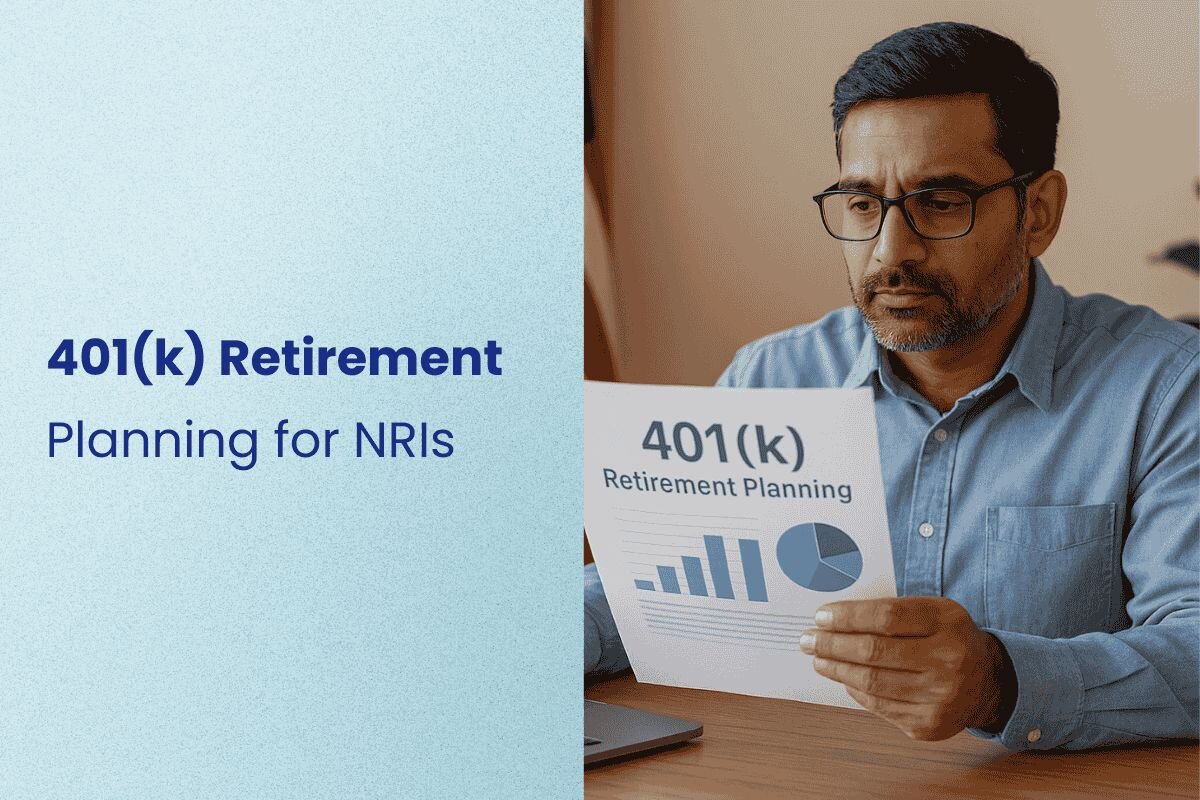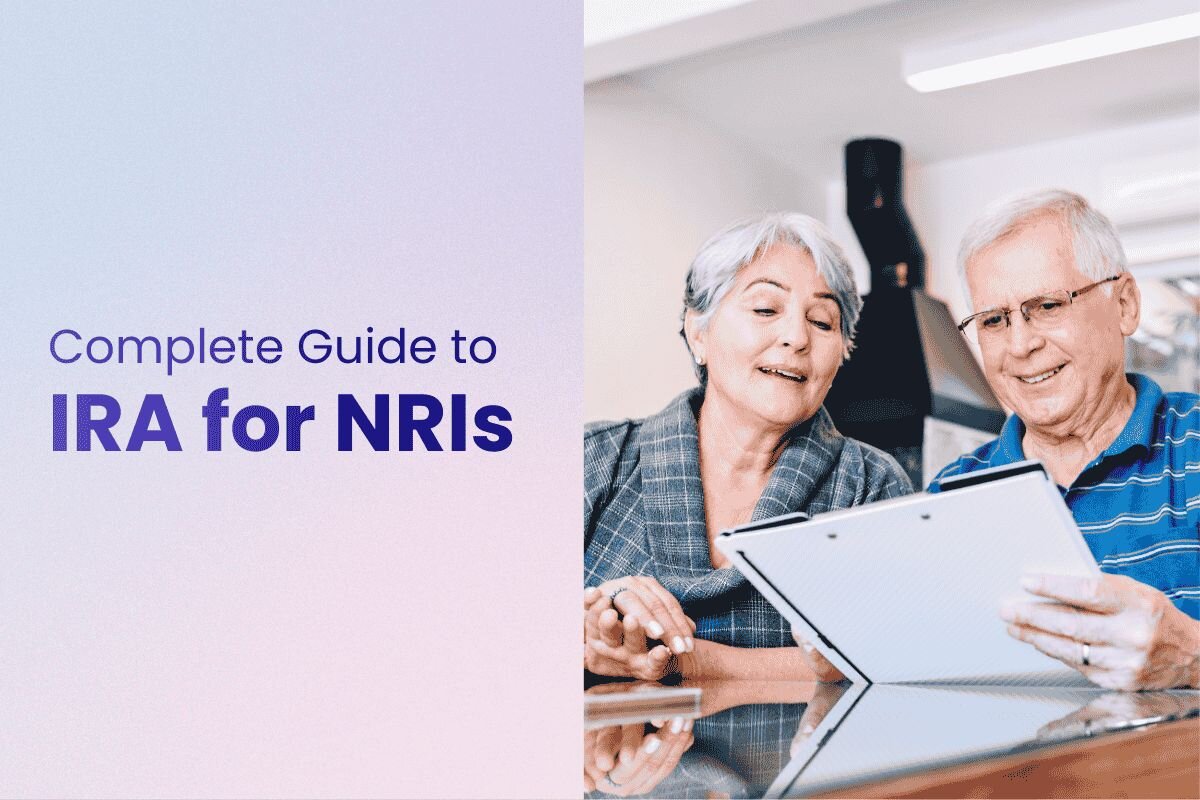You came to America with a simple plan - earn money, gain experience, and head back home. But somewhere along the way, your temporary stay became permanent. What started as a short-term goal quietly turned into a lifelong commitment.
Here's the problem: those early years cost you. Missed opportunities pile up while you figure out two different financial systems. The average U.S. household has just $65,000 saved for retirement - hardly enough in a high-cost environment. You're dealing with double taxation headaches, though the US-India Double Tax Avoidance Agreement (DTAA) can help. Plus, you need to choose between NRE accounts for repatriation and NRO accounts with their limitations.
This guide cuts through the confusion. You'll learn to build a solid financial foundation that works across borders, whether you stay in America or return to India.
Key Takeaway
Cross-border money management gets simple when you set the right accounts, file clean taxes, and align investments to where you’ll live and spend. In this blog, you’ll understand how to manage your finances seamlessly across the US and India.
- Choose NRE, NRO, FCNR based on income and currency
- Build US credit via secured card, authorized user, or CIBIL via Nova Credit
- Use Double Taxation Avoidance Agreement (DTAA) credits and file on time
- Track Foreign Bank Account Report (FBAR) and Foreign Account Tax Compliance Act (FATCA) thresholds
- Max 401(k) and Individual Retirement Account (IRA); if returning, file Form 10EE (Section 89A)
- Diversify US and India, then protect with term insurance, dual wills, and split emergency funds
Setting Up Your Financial Foundation in the US
You can't use the same financial strategies as US citizens. Your cross-border status requires specific tools and approaches that work across two different systems.
Which Bank Accounts Do You Need as an NRI?
Start with the right account structure. The Non-Resident External (NRE) account handles your foreign earnings with tax-free interest and full repatriation benefits. You can move this money freely between countries.
For Indian income like rental payments or dividends, open a Non-Resident Ordinary (NRO) account. The downside? Interest gets taxed in India.
Worried about currency swings? Consider a Foreign Currency Non-Resident (FCNR) account. Your deposit stays in foreign currency with zero exchange loss on principal and interest. You get tax-free interest in India plus full repatriation rights.
Read more about - NRE vs NRO vs FCNR - Which Account is Best for NRIs?
How Do You Build Credit in America?
Your Indian credit score means nothing here. You start from zero.
Open a US bank account first, then apply for a secured credit card. You deposit money that becomes your credit limit. Pay every bill on time and keep credit use under 30%.
Two faster options exist. Become an authorized user on someone's card if you trust them. Or use Nova Credit - they help Indians qualify for US credit products using their CIBIL score.
What's the Best Way to Track Everything?
Managing money across borders can get complicated fast - different currencies, accounts, and tax systems make it easy to lose track. Staying organized with the right tools and expert guidance is key.
While digital banking gives you round-the-clock access to your accounts anywhere in the world, having an advisor who understands both Indian and US financial systems can simplify decisions.
With the InvestMates app, NRIs can go a step further - by tracking all their Indian and US investments, assets, and accounts in one unified dashboard, making it effortless to see their entire financial picture at a glance.
Your next move: set up the right account types based on your income sources and start building your US credit profile early.
How Do You Handle Taxes Across Two Countries?
Tax mistakes cost you thousands. File incorrectly, and you face penalties that can wipe out years of savings.
What Does the US-India Tax Treaty Actually Do for You?
The US-India Double Taxation Avoidance Agreement (DTAA) stops the government from taxing the same income twice. Pay taxes on your US salary? Claim those as credits when filing in India.
The treaty sets specific rates: dividends get taxed at 15-25%, interest at 10-15%. Know these rates before you invest.
What to do next: Review your income sources and identify which treaty benefits apply to you.
When Must You File Tax Returns?
US filing: You must report worldwide income on Form 1040 if you're a US tax resident. Green Card holder or pass the Substantial Presence Test? You file by April 15th, period. Extensions are available, but don't wait.
Indian filing: Your residential status determines everything. File with the wrong status and face penalties plus attempts to tax your global income. Indian returns are typically due July 31st.
What to do next: Determine your tax residency status in both countries before filing season starts.
Read more about - how to file NRI Income Tax in India
How Do You Avoid FATCA and FBAR Penalties?
FBAR hits you if foreign accounts exceed $10,000 total at any point during the year. Bank accounts, mutual funds, demat accounts - they all count. Miss filing? Face $10,000 penalties per violation.
FATCA requires Form 8938 when foreign assets exceed $50,000 (single) or $100,000 (married) at year-end. File this with your tax return, not separately like FBAR.
What to do next: Set calendar reminders for FBAR (April 15, auto-extension to October 15) and track your account balances monthly.
How Should You Build Wealth Across Two Countries?
You need a smart approach that works with two financial systems. Keep short-term money in US dollars where you'll spend it soon. Direct long-term investments toward maximum growth opportunities.
What's the Best Way to Use 401(k) and IRA Accounts?
Start here: 401(k) plans and IRAs offer serious tax advantages for NRIs working in America. Traditional 401(k) contributions cut your current taxable income and grow tax-deferred.
Here's what most people miss: Section 89A of the Indian Income Tax Act prevents double taxation if you return to India. You only pay Indian taxes when you withdraw funds. But you must file Form 10EE during your first year as a Resident and Ordinary Resident (ROR) in India.
What to do next: Max out your 401(k) contributions and file Form 10EE if you plan to return to India.
Should You Invest in Indian Markets from the US?
The numbers look good. Indian equity mutual funds delivered impressive returns - large cap funds generated 14.4% over 10 years, mid cap funds 19.53%, and small cap funds 21.14%.
But here's the catch: many US-based NRIs face restrictions due to FATCA compliance requirements.
Real estate in India presents another opportunity. The market expects to reach $650 billion by 2025. You can purchase commercial or residential properties but cannot buy agricultural land without special RBI permission.
What to do next: Check FATCA restrictions before investing in Indian mutual funds. Consider real estate for diversification.
How Do US and Indian Markets Compare?
Both markets delivered similar 10-year returns - Dow Jones at 9.75% and Sensex at 9.70%. But Indian markets show higher volatility (5.06% vs 3.92%).
The correlation coefficient between these markets stands at 0.54, indicating moderate diversification benefits. US markets favor tech firms while Indian indices are dominated by financial stocks.
What to do next: Diversify across both markets but expect higher volatility from Indian investments.
Read more about - Investment Options for NRIs in India
Where Should You Plan to Retire?
If you're retiring in India, allocate investments accordingly. Consider India's National Pension Scheme (NPS).
For dual-country retirement, maintain health insurance in both nations and create clear wills for assets across borders.
What to do next: Decide your retirement location now - it determines your investment allocation strategy.
Read more about - NRI Retirement Planning
How do you protect what you've built?
You've worked hard to build wealth across two countries. Now you need to protect it. Your cross-border status creates unique risks that require specific strategies for safeguarding assets and supporting family.
What's the smartest way to buy insurance?
Buy term life insurance in India. The cost difference is staggering - heart bypass surgery costs $5,200 in India versus $144,000 in the US. Purchase your policy in India for affordability while ensuring global coverage stays intact if you move.
Pay premiums through your NRE/NRO accounts to claim tax deductions under Section 80C up to ₹1.5 lakh under the old tax regime. This strategy cuts your costs and taxes simultaneously.
What to do next: Compare term insurance rates from top Indian insurers and verify global coverage terms before purchasing.
How should you structure your estate planning?
Create separate wills for US and Indian assets. This prevents legal conflicts between different court systems. Here's why this matters: the US federal estate tax exemption is $13.61 million for 2024, but non-US citizens get only $60,000 exemption for US assets.
Consider establishing private discretionary trusts with Indian trustees to manage assets professionally according to your specific terms. This structure offers more control than standard estate planning.
What to do next: Consult estate planning attorneys in both countries to draft jurisdiction-specific wills.
Where should you keep emergency funds?
Maintain two months of expenses in your overseas savings account for immediate access. Keep the remaining emergency funds in NRE/NRO accounts with netbanking access for seamless transfers.
Liquid mutual funds in India offer 7-8% returns with no exit penalties, making them ideal for emergency funds that still earn returns. This beats keeping all emergency money in low-yield savings accounts.
What to do next: Calculate your monthly expenses and split emergency funds between high-access US accounts and higher-yield Indian options.
What's the best way to support family in India?
Managing family expenses from abroad can be simple with the right setup. Open joint NRE or FCNR accounts with resident relatives to enable smooth, low-cost money transfers. Automate recurring payments for expenses like utilities, EMIs, and insurance premiums through scheduled transfers or auto-debits.
Several banks and remittance platforms now offer convenient money transfer services, allowing beneficiaries in India to initiate requests and track transactions in real time - giving them more control while keeping you updated.
Want to compare your options? Check out this blog for a detailed breakdown of the best ways to send money from the USA to India: Send Money from USA to India
Conclusion
Managing your money across two countries doesn't have to drain your energy once you know the system. Start with the right bank accounts - NRE, NRO, or FCNR based on your income sources.
Build your US credit early, stay on top of tax filings in both countries, and use the DTAA to avoid double taxation headaches. Spread your investments between US and Indian markets based on where you'll spend your retirement years.
Protect what you've built with the right insurance and estate planning documents.
Most importantly, don't let the complexity paralyze you - pick one area from this guide and take action this week.
Frequently Asked Questions
What are the key bank account options for NRIs in the USA?
NRIs have three main account options: Non-Resident External (NRE) accounts for foreign earnings, Non-Resident Ordinary (NRO) accounts for income generated within India, and Foreign Currency Non-Resident (FCNR) accounts for maintaining deposits in foreign currency without exchange loss risks.
How can NRIs build a credit score in the USA?
NRIs can build a US credit score by opening a US bank account, applying for a secured credit card, paying bills on time, maintaining low credit utilization, and becoming an authorized user on a trusted person's credit card. Some services also allow using Indian credit scores to qualify for US credit products.
What are the tax filing requirements for NRIs in both the US and India?
NRIs must file US tax returns by April 15th, reporting worldwide income if they're US tax residents. In India, filing obligations depend on residential status, with the typical deadline being July 31st. It's crucial to understand and utilize the US-India Double Taxation Avoidance Agreement to prevent double taxation.
What investment options are available for NRIs in both the US and India?
NRIs can invest in 401(k) plans and IRAs in the US, while in India, they can consider mutual funds and real estate. It's important to balance investments between US and Indian markets, considering factors like market volatility, diversification benefits, and long-term growth potential.
How should NRIs approach estate planning and asset protection?
NRIs should create separate wills for US and Indian assets, consider establishing trusts for efficient asset transfer, and maintain emergency funds in both USD and INR.
It's also advisable to purchase life insurance in India for cost savings while ensuring global coverage, and set up joint accounts for supporting family in India.
About the Author

By Prakash
CEO & Founder of InvestMates
Prakash is the CEO & Founder of InvestMates, a digital wealth management platform built for the global Indian community. With leadership experience at Microsoft, HCL, and Accenture across multiple countries, he witnessed firsthand challenges of managing cross-border wealth. Drawing from his expertise in engineering, product management, and business leadership, Prakash founded InvestMates to democratize financial planning and make professional wealth management accessible, affordable, and transparent for every global Indian.




